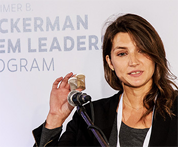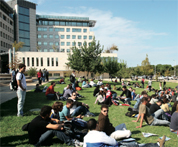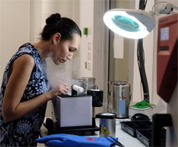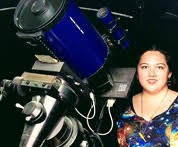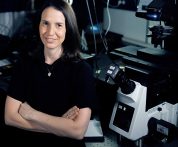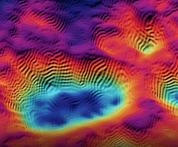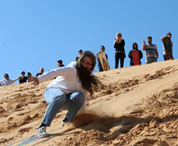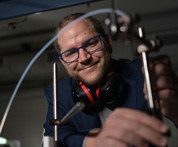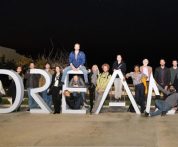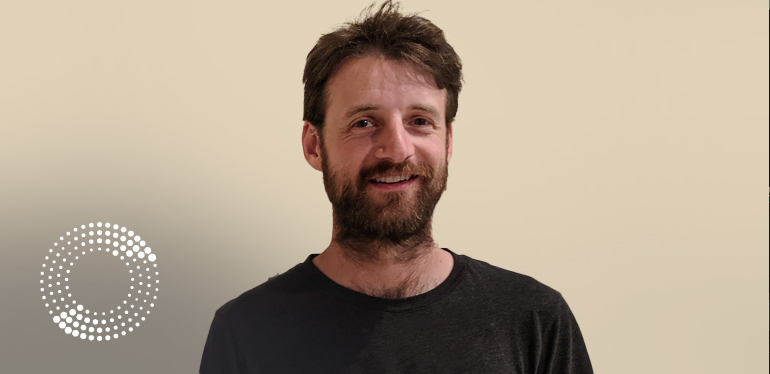Zuckerman Postdoctoral Scholar, Mark Winter, publishes new findings in PLOS Computational Biology.
Paper Abstract:
Biomineralization is the process by which organisms use minerals to harden their tissues and provide them with physical support. Biomineralizing cells concentrate the mineral in vesicles that they secret into a dedicated compartment where crystallization occurs. The dynamics of vesicle motion and the molecular mechanisms that control it, are not well understood. Sea urchin larval skeletogenesis provides an excellent platform for investigating the kinetics of mineral-bearing vesicles. Here we used lattice light-sheet microscopy to study the three-dimensional (3D) dynamics of calcium-bearing vesicles in the cells of normal sea urchin embryos and of embryos where skeletogenesis is blocked through the inhibition of Vascular Endothelial Growth Factor Receptor (VEGFR). We developed computational tools for displaying 3D-volumetric movies and for automatically quantifying vesicle dynamics. Our findings imply that calcium vesicles perform an active diffusion motion in both, calcifying (skeletogenic) and non-calcifying (ectodermal) cells of the embryo. The diffusion coefficient and vesicle speed are larger in the mesenchymal skeletogenic cells compared to the epithelial ectodermal cells. These differences are possibly due to the distinct mechanical properties of the two tissues, demonstrated by the enhanced f-actin accumulation and myosinII activity in the ectodermal cells compared to the skeletogenic cells. Vesicle motion is not directed toward the biomineralization compartment, but the vesicles slow down when they approach it, and probably bind for mineral deposition. VEGFR inhibition leads to an increase of vesicle volume but hardly changes vesicle kinetics and doesn’t affect f-actin accumulation and myosinII activity. Thus, calcium vesicles perform an active diffusion motion in the cells of the sea urchin embryo, with diffusion length and speed that inversely correlate with the strength of the actomyosin network. Overall, our studies provide an unprecedented view of calcium vesicle 3D-dynamics and point toward cytoskeleton remodeling as an important effector of the motion of mineral-bearing vesicles.
 ISRAELI COUNCIL FOR HIGHER EDUCATION
ISRAELI COUNCIL FOR HIGHER EDUCATION MIT-Israel Zuckerman STEM Fund for Faculty Collaboration
MIT-Israel Zuckerman STEM Fund for Faculty Collaboration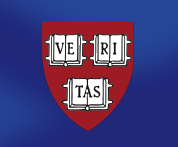 The Zuckerman Travel and Research STEM Fund at Harvard
The Zuckerman Travel and Research STEM Fund at Harvard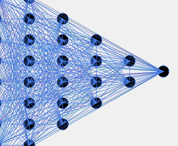 Zuckerman AI Fund at Technion
Zuckerman AI Fund at Technion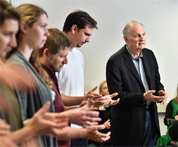 Alan Alda Communicating Science
Alan Alda Communicating Science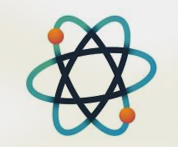 Zuckerman Institute – ScienceAbroad
Zuckerman Institute – ScienceAbroad Zuckerman Institute – America-Israel Friendship League partnership
Zuckerman Institute – America-Israel Friendship League partnership
